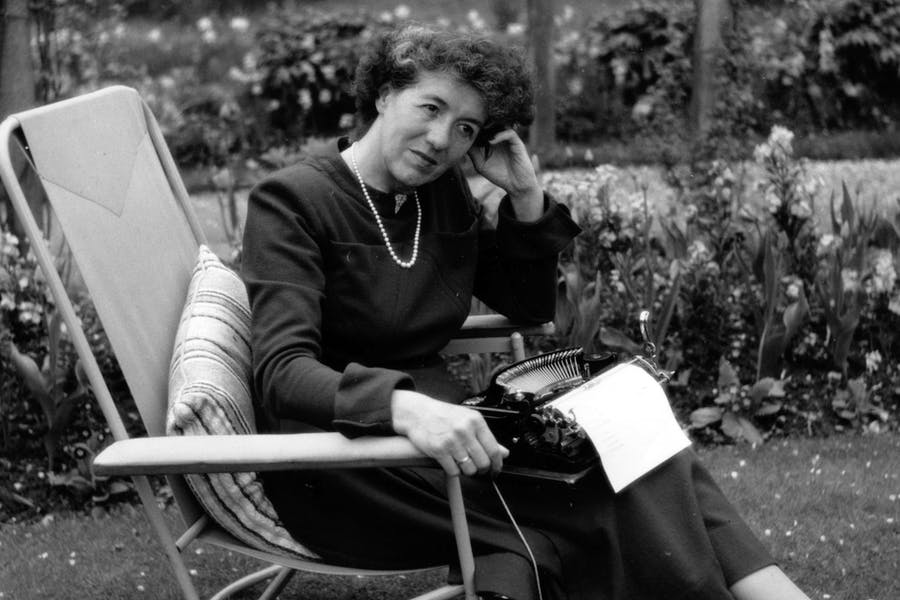As a child, I couldn’t get enough of Enid Blyton’s books. From the moment I discovered the Malory Towers series, set in a girls’ boarding school on a windswept Cornish clifftop, I was hooked. My strict grandmother called me a spendthrift for frittering all my pocket money (the princely sum of two shillings and sixpence a week) on paperback editions of Malory Towers, St Clare’s, The Naughtiest Girl and the Famous Five but I was too engrossed to care.
Blyton’s first book, a slim volume of poetry called Child Whispers, was published in 1922 and she went on to publish more than 800 titles before her death in 1968. In many ways this prolific writer was ahead of her time, keenly aware of the importance of branding and insistent that the front of each book was imprinted with her distinctive signature.
This year marks the 75th anniversary of the Famous Five series and the stories are as popular as ever. So why has Blyton stood the test of time when other children’s novels have fallen by the wayside? Some of her books have been criticised as politically incorrect and dated, yet they still strike a chord with young readers. Children love the fact that Julian, Dick, Anne and George (plus Timmy the dog) are allowed to roam the countryside by themselves, taking ‘dips’ in the sea, sniffing out adventures and solving mysteries without a grown-up in sight. Adults hark back to their childhoods, nostalgic for simpler days when anything could be fixed by a picnic of hard-boiled eggs and lashings of ginger beer.

The new look Famous Five
Kirrin Castle, the scene of many of the Famous Five’s escapades, was inspired by Corfe Castle in Dorset, where Blyton and her family spent their summer holidays. On a recent visit to the ancient crumbling castle I half expected to stumble across the four children pouring over a smugglers’ map. Blyton’s descriptions kept resonating in my head. ‘Broken archways, tumbledown towers, ruined walls – that was all that was left of a once beautiful castle, proud and strong,’ she wrote in Five on a Treasure Island, the first Famous Five book. ‘Now the jackdaws nested in it and the gulls sat on the topmost stones.’ Three-quarters of a century later, the place still looks exactly as she portrayed it.
Blyton’s titles sell at the rate of one a minute in the UK and the recently published spoof Famous Five stories for adults have hit the book sales jackpot. Five on Brexit Island has sold more than 372,000 copies in the UK and a new batch of titles, Five Forget Mother’s Day, Five Lose Dad in the Garden Centre and Five Get Beach Body Ready, are on their way. The editorial director of Enid Blyton Entertainment, which gave its permission for the parodies, reckons that far from being appalled Blyton would have been thrilled to reach a new audience.
In honour of this year’s anniversary Hodder Children’s Books is republishing all 21 Famous Five adventures, complete with dashing new covers by illustrator Laura Ellen Anderson. Meanwhile, a collection of short stories, Good Old Timmy, is being released to mark World Book Day. Diehard Blyton fans like me will be reassured to find that after updating the language in 2010 to make the tales more appealing to today’s generation (‘mother and father’ became ‘mum and dad’, ‘pullover’ became ‘jumper’ and ‘awful swotter’ was changed to ‘bookworm’) the publisher has abandoned the idea and gone back to the previous text.
Anderson’s new illustrations are stunning, capturing the stories’ classic charm and jolly japes but even so, these new incarnations of Julian, Dick, Anne and George are slightly too hip for me. In my eyes the children will always be wearing old-fashioned Aertex shirts tucked into baggy, knee-length shorts and carrying knapsacks filled with ham sandwiches and slices of fruitcake. Ginger beer anyone?






Comments